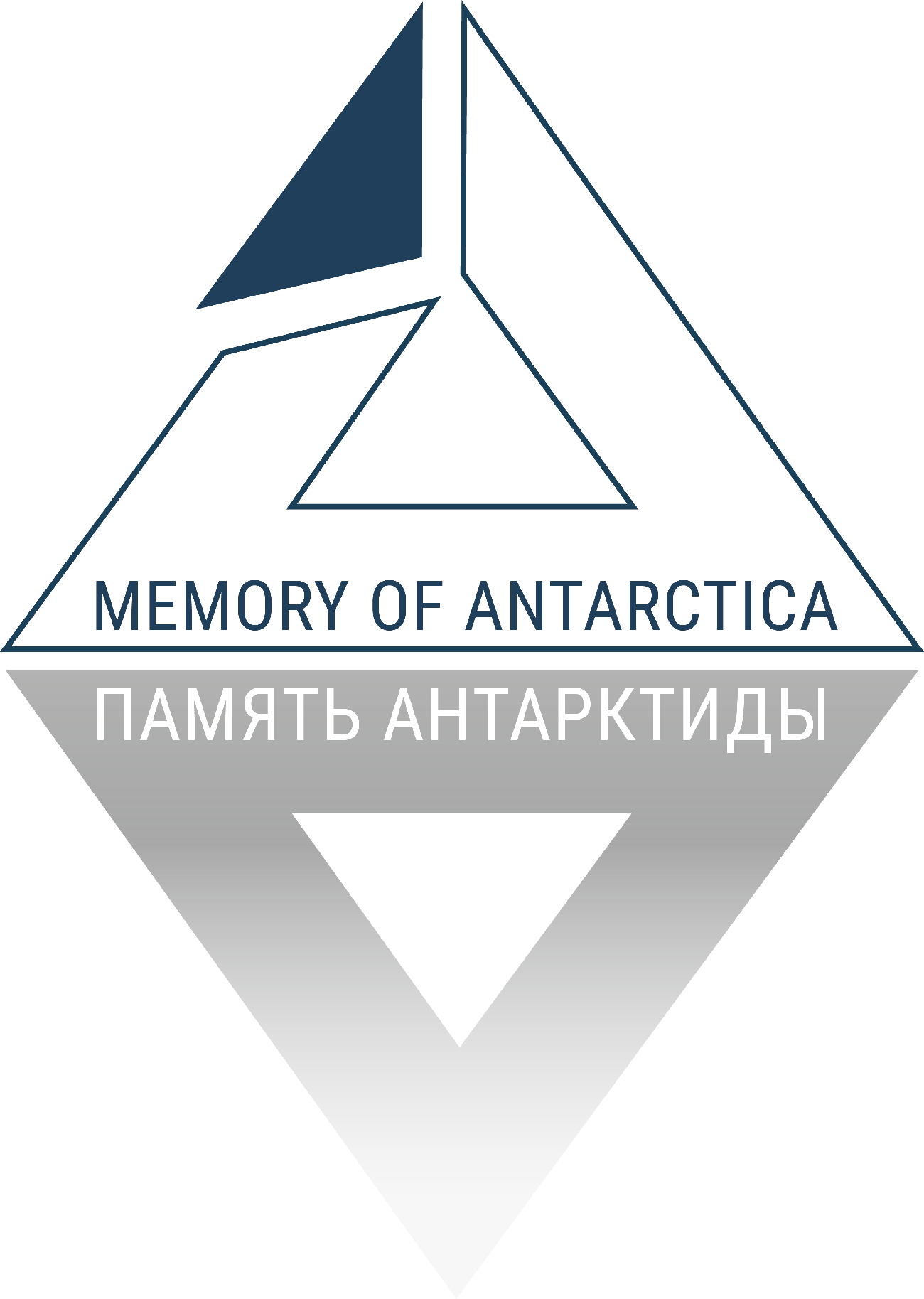TEMPLE IN ANTARCTICA
TEMPLE IN ANTARCTICA
The Holy Trinity Church of the Russian Bellingshausen Station is the only one that is
permanently open on the sixth continent. It commemorates all the explorers who died
in Antarctica.
permanently open on the sixth continent. It commemorates all the explorers who died
in Antarctica.
Thank You for Your Donation!
The church was made of cedar and larch and put together in the Altai. Then it was
disassembled into separate logs, each inscribed and sent by sea to the Bellingshausen
Station. The church was being built manually for two months and consecrated in
2004.
One person who had a remarkable life is to be credited for the fact that an Orthodox
church now exists on the sixth continent. The idea to build it in Antarctica was turned
into reality by a famous parachute researcher, Pyotr Ivanovich Zadirov.
disassembled into separate logs, each inscribed and sent by sea to the Bellingshausen
Station. The church was being built manually for two months and consecrated in
2004.
One person who had a remarkable life is to be credited for the fact that an Orthodox
church now exists on the sixth continent. The idea to build it in Antarctica was turned
into reality by a famous parachute researcher, Pyotr Ivanovich Zadirov.
Pyotr Zadirov was born in Novonikolskoye, Orenburg Region. Having completed ten
years of general education, he wanted to enter a flight school. Pyotr dreamed of
following in the footsteps of his father, a military pilot. He tried to get into the
Orenburg Aviation School, but did not pass the health check. There were five
attempts, and each time Pyotr was discouraged by the conclusion: unfit for flying. He
had to withdraw his documents.
years of general education, he wanted to enter a flight school. Pyotr dreamed of
following in the footsteps of his father, a military pilot. He tried to get into the
Orenburg Aviation School, but did not pass the health check. There were five
attempts, and each time Pyotr was discouraged by the conclusion: unfit for flying. He
had to withdraw his documents.
Once, Pyotr heard of the Izhevsk Aeroclub on the radio. He checked with the map,
packed up and headed there. Just three months later, he made his first parachute jump and realised: “This is right up my street!” Then came the advanced parachute degree, the Moscow institute, the central aeroclub; the sky, the jumps, the airfields…
During the summer of 1980 Zadirov was accepted to the Moscow Automatic Equipment Research Institute (now Scientific Research Institute of Parachute Construction) as an intern. He had to prove himself in the testing of the new parawing for intelligence officers. One could make a jump with that parachute virtually in any
place on the planet. The research was carried out on Mount Elbrus. Being part of a climber group, Zadirov ascended to the summit three (!) times, so that he could arrive at the crucial decision on location: he had to determine whether skydivers could make the jump right there and then. Having finished the job, Pyotr Zadirov was accepted
into the tester group. In total, Zadirov test-jumped over three thousand times, and his 1012th dive was
legendary. 1981, winter. It is intensely cold on the airfield in Kirzhach. The testing of the cutting-edge parachute system is almost over. They need it for mainstream production, and the work has to be finished as soon as possible. Zadirov is faced with the task of finding out how well the parachute opens at lower temperatures. The minimum altitude for such jumps is 1200 m (3937 feet – прим. пер.), so that the skydiver could unhook the main canopy and use a spare in case of parachute failure.It is cloudy, which makes it difficult to jump from the altitude required. There is a
deadline, however, and Pyotr Zadirov decides not to cancel the tests, but to conduct them at a lower height of 800 m.
Jump. The parachute refuses to open. The altimeter has gone beyond the red line.
Zadirov tries to remove the main parachute, but one of the locks is jammed. The lines have to be cut, but there is no time for that now. The test engineer comes to the conclusion: there is ice in the grooves of the lock and water inside. The solution is?..
He has to rub the grooves, thus warming them up. So, Pyotr begins to rub the trigger.
A couple of seconds pass, the ice melts, and finally, the canopy is released. Zadirov grabs the ring of the spare parachute, but the edge of the forest is already in sight overhead. Thump.
“I realise I’m alive,” Pyotr Ivanovich recounted. “But maybe I’m in shock, and everything’s broken? I move my arms, they move. I move my legs, they move. That means my spine is intact. I try to get up, and it turns out I’m in a snowdrift, which is virtually my height, it is the edge of the runway. The path was cleared by rotors,
which piled the snow on the side.When Zadirov was rushed to the hospital in an ambulance, they could not locate a
single fracture! Not one crack! His medical history states the same: “Right hip pointer as the result of a fall from a plane 800 m up in the air”.“What was I thinking of during the fall? I’m a tester. It’s my profession,” Pyotr Zadirov said. “I have to find the reason for the failure. Implementers must know exactly what needs to be altered.
Otherwise, fellow skydivers could get into the same fix.
Of course I wasn’t saved by the snowdrift, it has nothing to do with it. There are no snowdrifts that can save a person falling from the height of 800 m.”
Here is the proof of that statement: the tragedy that struck Zadirov’s friend, another
test engineer, Vladimir Silenkov. The scenario was the same, but no miracle happened. Vladimir crashed right before Pyotr’s eyes.“I took Volodya to the morgue, washed and clothed him,” Pyotr Ivanovich recounted.
“I saw myself as if from a distance, as I realised that I could’ve been in my friend’s place myself. Soon after I had a dream. The parachute won’t open. Failure. I fall. Exactly like Volodya. Chills up my spine, and I can’t do anything. A thought strikes
me: What will I be knocked against? There’s twenty seconds left. The field closes in, as well as the forest and the road, which is icy, as it’s the middle of winter. There is a dot on the road. The dot keeps growing… I look harder: it’s my Mother. She looks up, takes off her Orenburg downy shawl, opens it up by two corners, and I fall right
into it… I wake up.
I got it then: I was saved by my Mother’s prayer. It’s not just a miracle that I survived, it’s the miracle of my Mother’s faith.”
There was a small wooden church in Novonikolskoye, Zadirov’s hometown, before the Revolution of 1917. In 1928 the church was destroyed, and during the Soviet times the glimmer of Orthodox faith was only seen in elderly ladies’ countryhouses.“A neighbour dies, and there’s nowhere to hold the funeral service; a child is born,
and there’s no one to baptise it,” Pyotr Ivanovich said. “That’s when all the elderly women reach the decision to gather at someone’s house and pray on their own. I remember very well how my Mother would be on her last legs in the evening. She had to raise me alone, my Dad died when I was still a child. Mum worked on a farm
as a milkmaid, and her physical load was immense. But when the elderly would knock on our window, saying: “Mariya, we’re praying for this or that person today, please come,” she would go with them, taking me by the hand. They would read the Gospel and Psalms and tell me to sleep near the stove. Then, late into the small hours,
they would have an abstentious meal. And they had to get up for work at 5 a.m…”That incident in February of 1981 did not quench Zadirov’s love of the sky. On the contrary, his work became even more difficult and risky. The jumps at the North Pole, the rescuing missions in the Arctic.
Once, on the very eve of New Year’s, a drifting ice sheet broke up. Polar explorers were wintering on it, and they were left without fuel or provisions. Someone had to deliver all the necessities to the ice floe. Meanwhile, the freezing temperatures dropped to minus 50 degrees. Zadirov was able to cope with that task as well.
Soon, Pyotr Zadirov created his own company providing for remote polar stations in the Arctic and the Antarctic. The company is part of the Rosgidromet system. Thus “Antex Polus”, the Centre of Avia and Parachute Field Studies, was born. After the USSR was dissolved, the company became private.“Once,” Zadirov said, “my polar friends started pointing out that in all of Antarctic
history there was never an Orthodox church there, no liturgy, no prayers for those who died, despite the fact that dozens of Russians had their final resting place on the
sixth continent. The decision was made to appeal to the Patriarch, Alexey II. If he gives his blessing, then we take on the task. His Holiness obliged. There was no turning back.”They built the church in the Altai, and the question arose: how do you transport it to
Antarctica? Sergey Lappo, Director of the Institute of Oceanology, member of the Russian Academy of Sciences, answered the call. He agreed to move the church with the help of the “Akademik Sergey Vavilov” research vessel. However, right away they were faced with new problems: how do you deal with customs, what is the status
of the church, who is the owner? Then the Patriarch issued the decree according to which the Antarctic church operated under his authority and was in the care of the
clergy of the Trinity Lavra of St. Sergius. To easily solve the tax problem, they signed a deed of donation agreement, stating that Pyotr Zadirov gave the church in Antarctica to the Lavra.On February 15, 2004 Theognostus, Archbishop of Sergiyev Posad, vicar of the Trinity Lavra of St. Sergius, consecrated the church in Antarctica. Oleg Sakharov, station leader, and Alexander Solovyov, driver mechanic, were the first to be baptised in the new church at the Bellingshausen.
Thus, priests (either monks or the white clergy) started to serve at the station. Like all other polar personnel, the priest and his assistant stay for over a year. They are
officially listed as the expedition’s construction employees. They work at the station just like everyone else, and carry out their clerical duties on Saturdays and Sundays.When there is good visibility, seafarers can see the church at the distance of approximately 30 km. It is as if the church takes to the sky, commemorating Russian pioneers and dozens of polar explorers who died far away from their native land.
packed up and headed there. Just three months later, he made his first parachute jump and realised: “This is right up my street!” Then came the advanced parachute degree, the Moscow institute, the central aeroclub; the sky, the jumps, the airfields…
During the summer of 1980 Zadirov was accepted to the Moscow Automatic Equipment Research Institute (now Scientific Research Institute of Parachute Construction) as an intern. He had to prove himself in the testing of the new parawing for intelligence officers. One could make a jump with that parachute virtually in any
place on the planet. The research was carried out on Mount Elbrus. Being part of a climber group, Zadirov ascended to the summit three (!) times, so that he could arrive at the crucial decision on location: he had to determine whether skydivers could make the jump right there and then. Having finished the job, Pyotr Zadirov was accepted
into the tester group. In total, Zadirov test-jumped over three thousand times, and his 1012th dive was
legendary. 1981, winter. It is intensely cold on the airfield in Kirzhach. The testing of the cutting-edge parachute system is almost over. They need it for mainstream production, and the work has to be finished as soon as possible. Zadirov is faced with the task of finding out how well the parachute opens at lower temperatures. The minimum altitude for such jumps is 1200 m (3937 feet – прим. пер.), so that the skydiver could unhook the main canopy and use a spare in case of parachute failure.It is cloudy, which makes it difficult to jump from the altitude required. There is a
deadline, however, and Pyotr Zadirov decides not to cancel the tests, but to conduct them at a lower height of 800 m.
Jump. The parachute refuses to open. The altimeter has gone beyond the red line.
Zadirov tries to remove the main parachute, but one of the locks is jammed. The lines have to be cut, but there is no time for that now. The test engineer comes to the conclusion: there is ice in the grooves of the lock and water inside. The solution is?..
He has to rub the grooves, thus warming them up. So, Pyotr begins to rub the trigger.
A couple of seconds pass, the ice melts, and finally, the canopy is released. Zadirov grabs the ring of the spare parachute, but the edge of the forest is already in sight overhead. Thump.
“I realise I’m alive,” Pyotr Ivanovich recounted. “But maybe I’m in shock, and everything’s broken? I move my arms, they move. I move my legs, they move. That means my spine is intact. I try to get up, and it turns out I’m in a snowdrift, which is virtually my height, it is the edge of the runway. The path was cleared by rotors,
which piled the snow on the side.When Zadirov was rushed to the hospital in an ambulance, they could not locate a
single fracture! Not one crack! His medical history states the same: “Right hip pointer as the result of a fall from a plane 800 m up in the air”.“What was I thinking of during the fall? I’m a tester. It’s my profession,” Pyotr Zadirov said. “I have to find the reason for the failure. Implementers must know exactly what needs to be altered.
Otherwise, fellow skydivers could get into the same fix.
Of course I wasn’t saved by the snowdrift, it has nothing to do with it. There are no snowdrifts that can save a person falling from the height of 800 m.”
Here is the proof of that statement: the tragedy that struck Zadirov’s friend, another
test engineer, Vladimir Silenkov. The scenario was the same, but no miracle happened. Vladimir crashed right before Pyotr’s eyes.“I took Volodya to the morgue, washed and clothed him,” Pyotr Ivanovich recounted.
“I saw myself as if from a distance, as I realised that I could’ve been in my friend’s place myself. Soon after I had a dream. The parachute won’t open. Failure. I fall. Exactly like Volodya. Chills up my spine, and I can’t do anything. A thought strikes
me: What will I be knocked against? There’s twenty seconds left. The field closes in, as well as the forest and the road, which is icy, as it’s the middle of winter. There is a dot on the road. The dot keeps growing… I look harder: it’s my Mother. She looks up, takes off her Orenburg downy shawl, opens it up by two corners, and I fall right
into it… I wake up.
I got it then: I was saved by my Mother’s prayer. It’s not just a miracle that I survived, it’s the miracle of my Mother’s faith.”
There was a small wooden church in Novonikolskoye, Zadirov’s hometown, before the Revolution of 1917. In 1928 the church was destroyed, and during the Soviet times the glimmer of Orthodox faith was only seen in elderly ladies’ countryhouses.“A neighbour dies, and there’s nowhere to hold the funeral service; a child is born,
and there’s no one to baptise it,” Pyotr Ivanovich said. “That’s when all the elderly women reach the decision to gather at someone’s house and pray on their own. I remember very well how my Mother would be on her last legs in the evening. She had to raise me alone, my Dad died when I was still a child. Mum worked on a farm
as a milkmaid, and her physical load was immense. But when the elderly would knock on our window, saying: “Mariya, we’re praying for this or that person today, please come,” she would go with them, taking me by the hand. They would read the Gospel and Psalms and tell me to sleep near the stove. Then, late into the small hours,
they would have an abstentious meal. And they had to get up for work at 5 a.m…”That incident in February of 1981 did not quench Zadirov’s love of the sky. On the contrary, his work became even more difficult and risky. The jumps at the North Pole, the rescuing missions in the Arctic.
Once, on the very eve of New Year’s, a drifting ice sheet broke up. Polar explorers were wintering on it, and they were left without fuel or provisions. Someone had to deliver all the necessities to the ice floe. Meanwhile, the freezing temperatures dropped to minus 50 degrees. Zadirov was able to cope with that task as well.
Soon, Pyotr Zadirov created his own company providing for remote polar stations in the Arctic and the Antarctic. The company is part of the Rosgidromet system. Thus “Antex Polus”, the Centre of Avia and Parachute Field Studies, was born. After the USSR was dissolved, the company became private.“Once,” Zadirov said, “my polar friends started pointing out that in all of Antarctic
history there was never an Orthodox church there, no liturgy, no prayers for those who died, despite the fact that dozens of Russians had their final resting place on the
sixth continent. The decision was made to appeal to the Patriarch, Alexey II. If he gives his blessing, then we take on the task. His Holiness obliged. There was no turning back.”They built the church in the Altai, and the question arose: how do you transport it to
Antarctica? Sergey Lappo, Director of the Institute of Oceanology, member of the Russian Academy of Sciences, answered the call. He agreed to move the church with the help of the “Akademik Sergey Vavilov” research vessel. However, right away they were faced with new problems: how do you deal with customs, what is the status
of the church, who is the owner? Then the Patriarch issued the decree according to which the Antarctic church operated under his authority and was in the care of the
clergy of the Trinity Lavra of St. Sergius. To easily solve the tax problem, they signed a deed of donation agreement, stating that Pyotr Zadirov gave the church in Antarctica to the Lavra.On February 15, 2004 Theognostus, Archbishop of Sergiyev Posad, vicar of the Trinity Lavra of St. Sergius, consecrated the church in Antarctica. Oleg Sakharov, station leader, and Alexander Solovyov, driver mechanic, were the first to be baptised in the new church at the Bellingshausen.
Thus, priests (either monks or the white clergy) started to serve at the station. Like all other polar personnel, the priest and his assistant stay for over a year. They are
officially listed as the expedition’s construction employees. They work at the station just like everyone else, and carry out their clerical duties on Saturdays and Sundays.When there is good visibility, seafarers can see the church at the distance of approximately 30 km. It is as if the church takes to the sky, commemorating Russian pioneers and dozens of polar explorers who died far away from their native land.







































